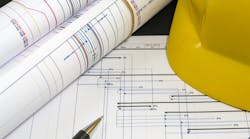By Ed Williams
Estimates are one of the most crucial aspects of planning a construction project. Since it is associated with forecasting the total job costs, a good estimate should contain all the expenses that are to be made on the project while depicting a clear picture of the plans, items, and other specs, related to the project.
However, the most precise and quality estimates are made after considering every single factor associated with the project which is not shown on plans and specs. Accounting, equipment rentals, material supplies, insurance, etc. are some of these factors to be listed as estimates need to hold an account for every bit of the project that should only be paid by the project owner.
Why Accuracy Is Necessary
Project owners, when it comes to construction work on a defined budget, expect the project to be completed within their planned budget. However, Contractors need to ensure that they can calculate the exact cost of the project to avoid business loss since any payment not justified falls into the account of the contractor itself.
Therefore, it would be fair to say that working on estimates is the most difficult part of the project, and winning it leads you straight to the opportunities. But estimating the cost of a building that isn’t built is not easy, and making plain guesswork could make your business fail.
Estimating To Win The Work
Estimating a construction project is not a one-person job. Even if you have the best of tools, it needs help from your team to win the work. After all, the project owner is not only considering the proposal shared by your company and has other bids to review.
This doesn’t necessarily mean that the estimate that appears to be the lowest needs to win the contract—it is the most convincing bid that makes the difference. A good estimate is based on attention to detail which helps to achieve thoroughness and transparency. In other words, a bid with the higher estimated cost of the project when presented right with all the detail of costs is likely to be considered over the other estimates that show low costs bids with no detail.
Cash Flow
When you are aware of all the costs associated with a project, it allows you to bill them as they occur. However, if you forget to include the costs of, say, hiring an HVAC contractor or renting an earthmover, it becomes difficult to justify on the payment application. And even if you try to bill that particular expense, it is very likely that the project owner might decline the bill making you carry the costs till the end of the project. Working with precision on every detail of the project could allow you to enjoy unrestricted payments and much-improved cash flow.
Zero Disputes
When you have a well-establish process for planning the construction estimates, making the most of your construction accounting software, and your team to account for every little nut and bolt, you can prove the necessity of work. This cuts out any scope of misunderstanding that the project owner may develop since a well-researched and reasoned bid is all a project owner needs. All in all, an estimate helps the project owner know your intentions and helps formulate contracts that are productive and profitable for your business.
Exploring The Five Tiers of Estimates
The process to plan estimates goes through five tiers and every tier is based on the previous one. When it comes to traditional bidding practices, it is usually a one-shot process, but the modern design-build process involves architects and other designers, and estimators are involved at every stage of the project to ensure things are kept under budget. As per the American Society of Professional Estimators (ASPE), the tiers layout as follows:
Tier 1: Order of Magnitude Estimate
The primary stage of estimate or Order of magnitude estimate is done before the designing part is approached. This is the rough idea of the costs and does not involve any details made with accuracy.
Tier 2: Schematic Design Estimate
When the general scope of the project is identified and contractors need to avoid any issues with the quality of materials, a schematic design estimate can be implemented to calculate the square-foot costs of the project.
Tier 3: Design Development Estimate
The design development estimate is usually made by the estimator or contractor brought by the architect. Though this process has all the material and systems defined, the likelihood for alterations in quality/scope is very high as drawings and other specs of a project are not prepared.
Tier 4: Construction Document Estimate
This type of estimate usually has very few unknowns. It is made after all the design, drawings, and other specs are finalized. It is usually considered as the final check on the budget before a bid proposal is shared with the project owner.
Tier 5: Bid Estimate
This is the final estimate which contains the total costs of the project that the contractor promises to meet. The bid estimate is the final cost that is used to compete against the other contractors. Also, the final costs of the projects are made using this bid, in case, contractor manages to win the bid with the proposal.
Common Mistakes
Estimation is a process that demands precision from the very beginning of the project lifecycle till the closeout. However, there are certain common areas of failure to keep in mind.
Know The Work: When it comes to construction, drawings are made to define quantity but specifications allow you to achieve quality. Contractors should be well aware of the submittals, practices, and staging involved in a project. Also, you should be aware of details such as the use of steel, its grade, paint, and its thickness, etc. when you need to ensure quality while saving some bucks. Such contractors can even foster clients for a lifetime by displaying value engineering and suggesting great alternatives to existing specifications.
Overhead: All the ancillaries that need to be kept in mind. Either it is project bonds, or anything related to office rent, hiring a clerical staff, etc. everything from paper to food must be considered.
Carrying Costs: Another important aspect of estimates is the carrying costs i.e. the payments that you may have to make upfront as a contractor such as material, labor, subs, etc. Make sure your defined job estimate must have a provision to accommodate such costs.
Business Development: Cracking a business deal is not free. Preparing for estimates or working on specifications, everything needs you to invest money. Therefore, your administration should integrate such costs into the estimate to cover those expenses.
Profit: Make sure your estimates should always have the bandwidth to create enough profits, even with the worst-case scenarios like delayed payments, change orders, or missing details.
Time: make sure you always count on factors that can consume your profits. This is all about time that your staff spends while waiting for specific deliveries, driving time at the site, or anything related to environmental factors that might affect the project progress.
Taking Advantage of Technology
Over the years, technology has helped contractors to make estimates most precise than ever. Especially, when planning for large projects can be highly consuming, using construction estimation software can help you identify all the items, measure labor costs, and work on taxes with ease. Technology can even help with minute details like equipment rentals, office overhead, permitting, licenses, temporary construction, etc. Since construction software is designed for multi-trade construction, you can find the predefined templates to keep track of all the possible expenses that can be made on the project.
Even if it seems excel sheets are enough to work on quality estimates, emerging demand for construction has proven legacy solutions to be slow. Using an advanced solution that has scope for BIM and other technologies can help make the process of estimation much more accurate.
The future of construction is all about 3D modeling and taking those models into the software to process immediate estimates. Becoming an early adopter of technology can be the reason behind success or failure.
After all, it is a race to make an educated guess with precision—a precision that does not leave it a guess at all.
Ed Williams is the Senior Team Lead at ProjectPro, an integrated construction accounting software. He holds a massive industry experience and is a Microsoft Dynamics expert who is focused on successful implementations. He is a visionary leader and always aim to deliver the best to the construction and project-oriented industries.


